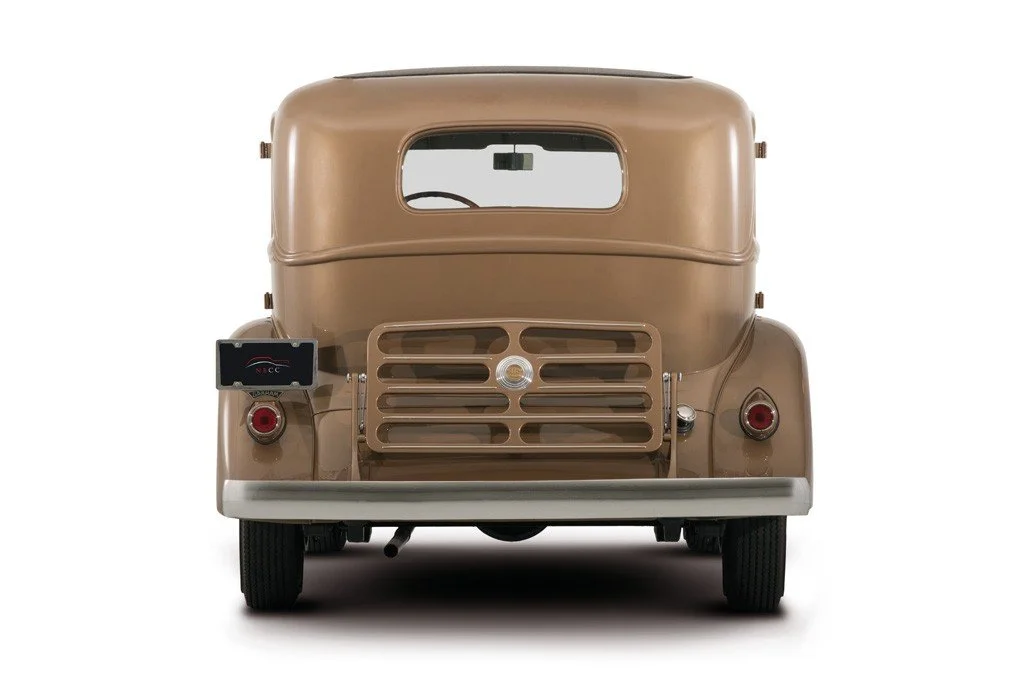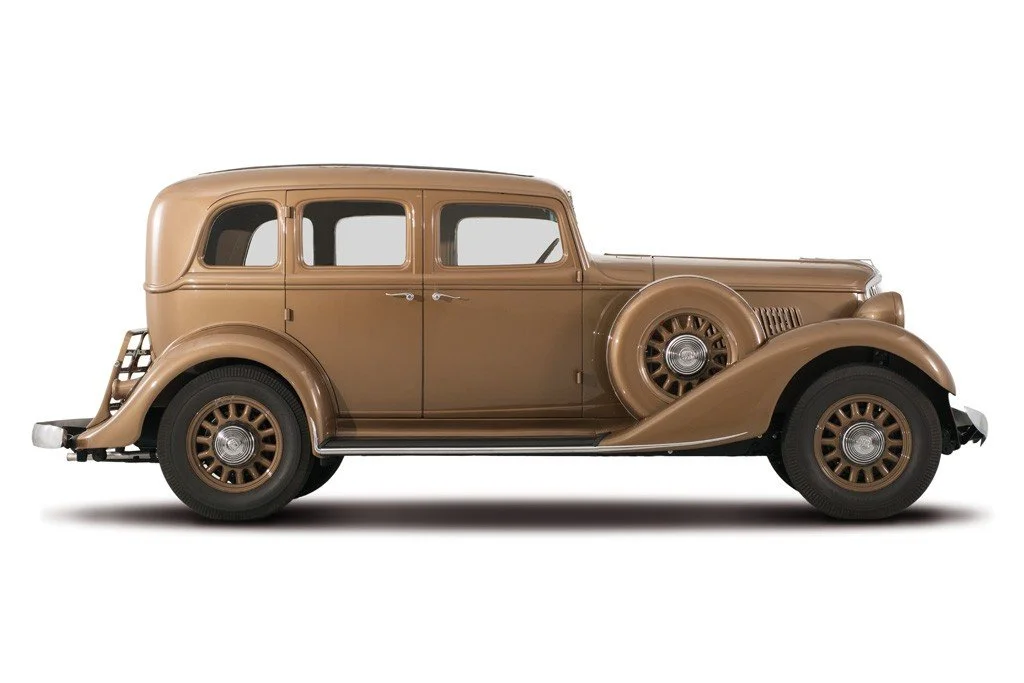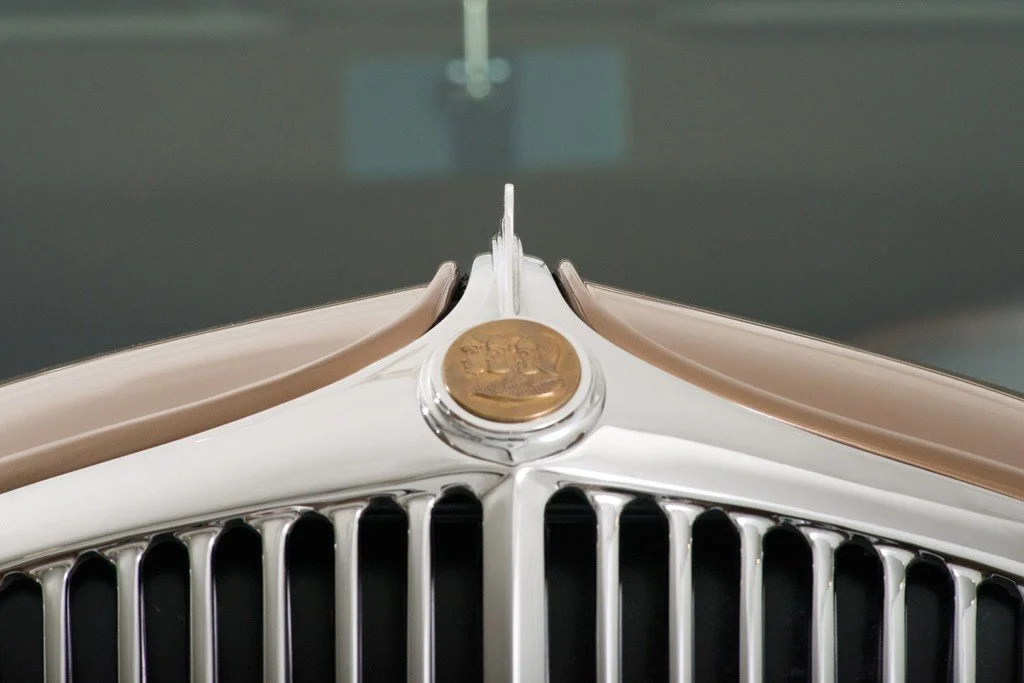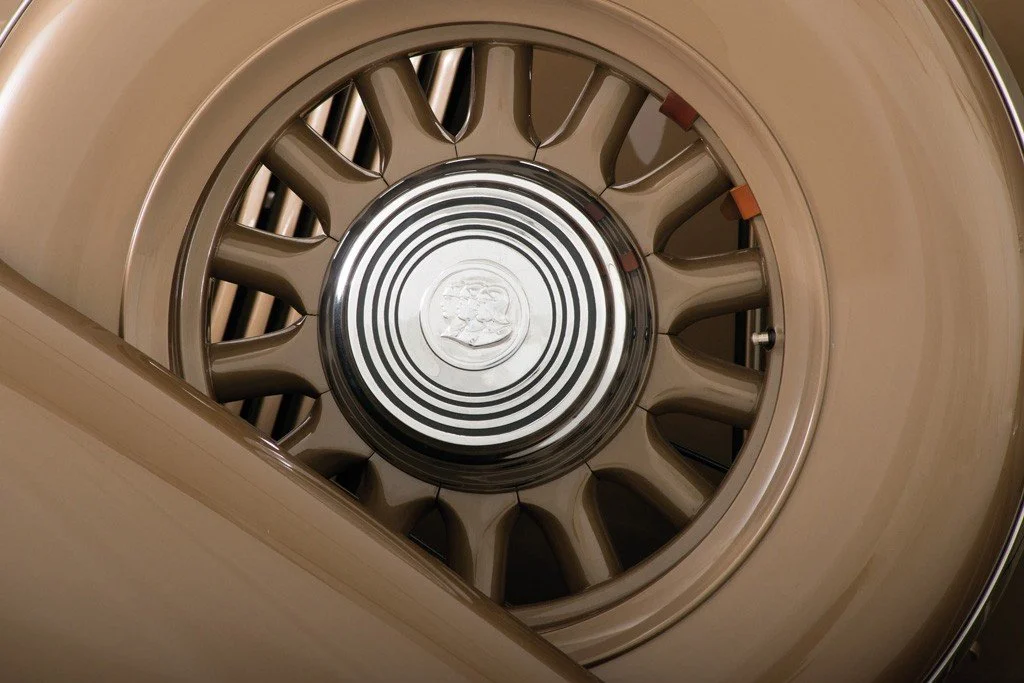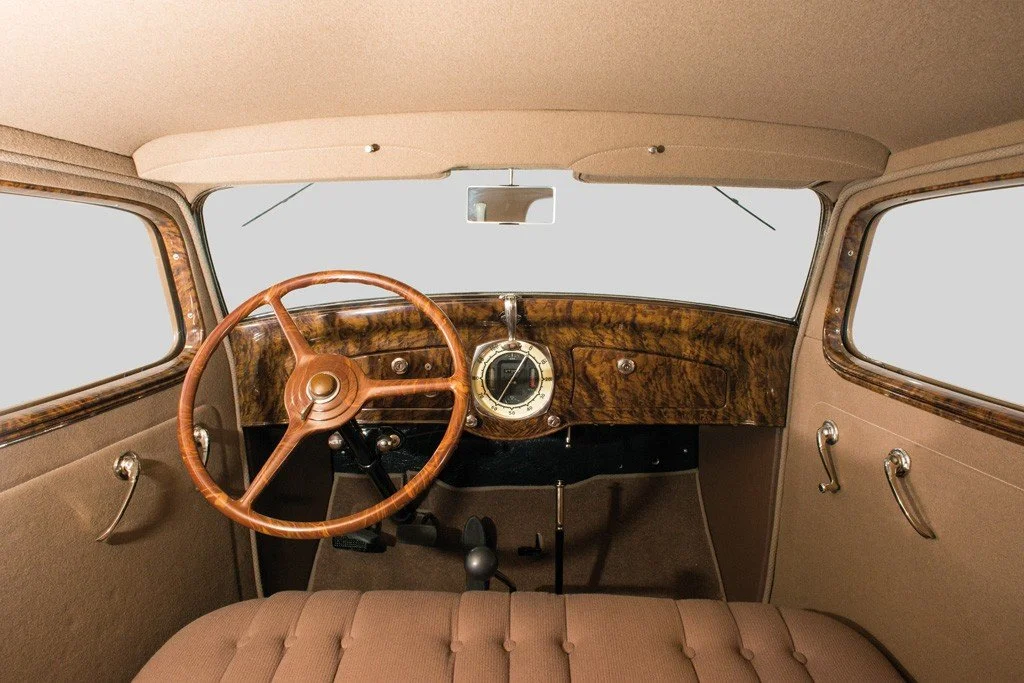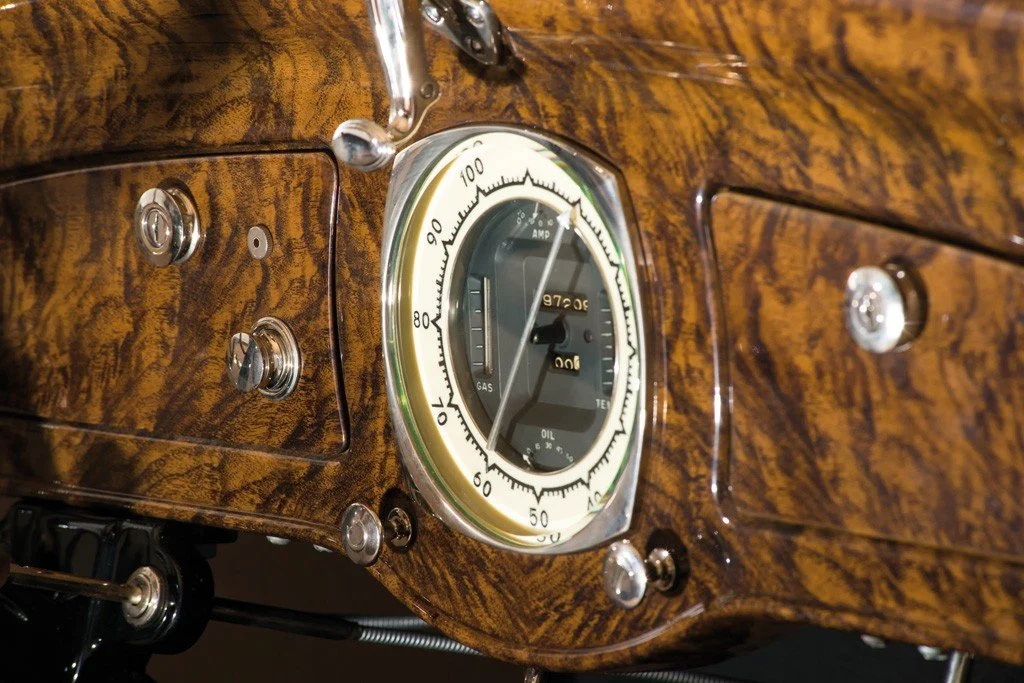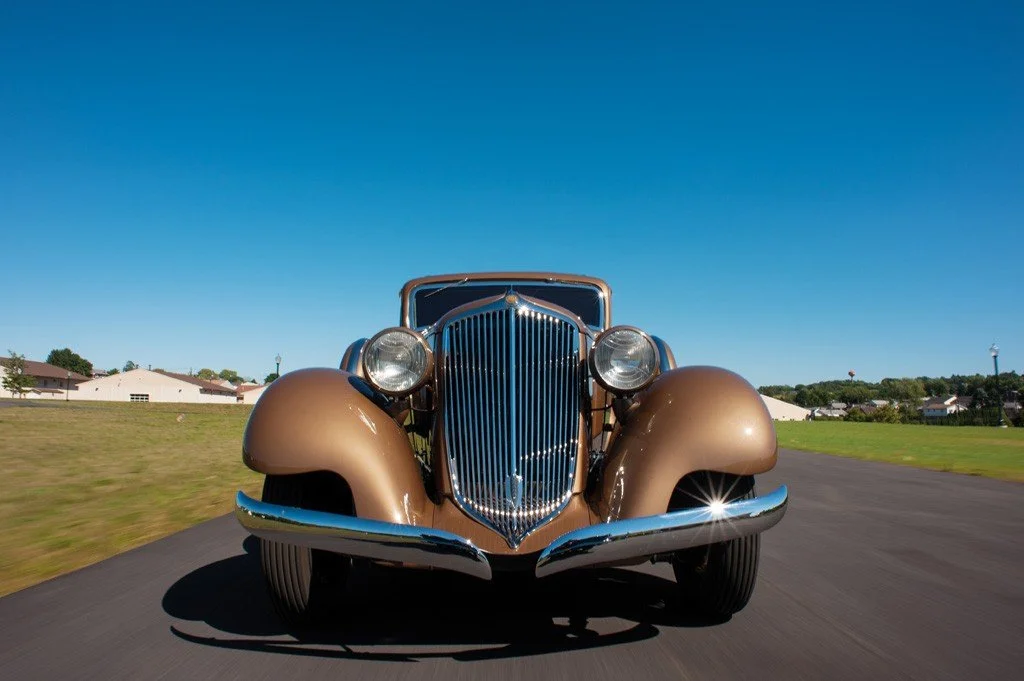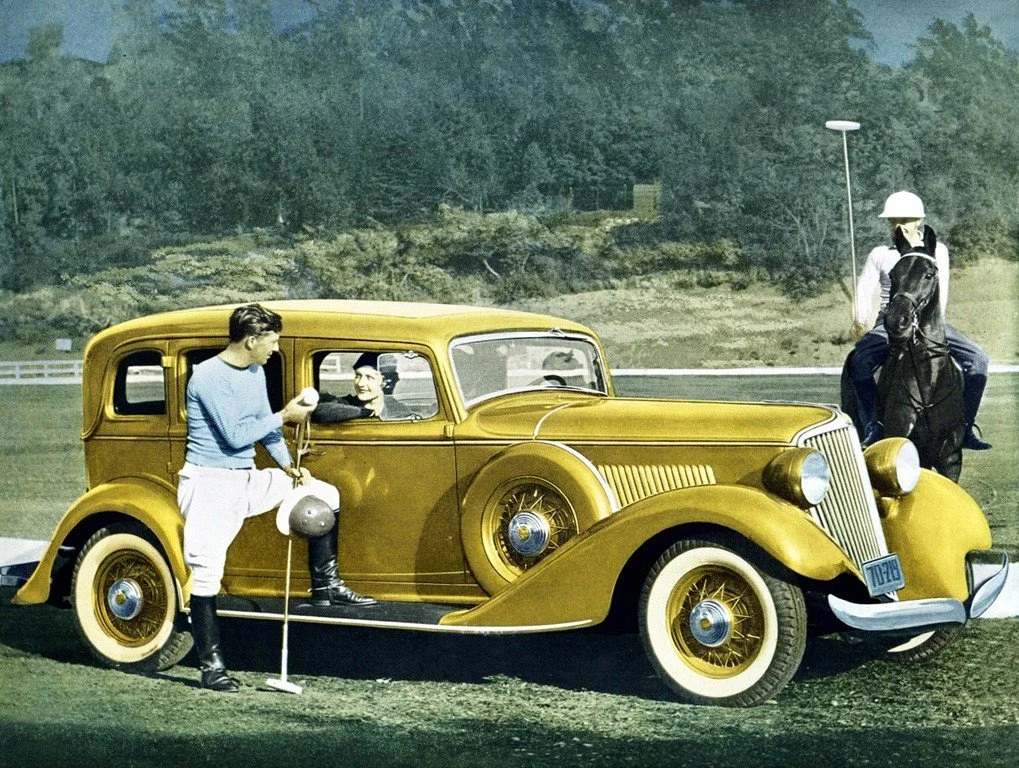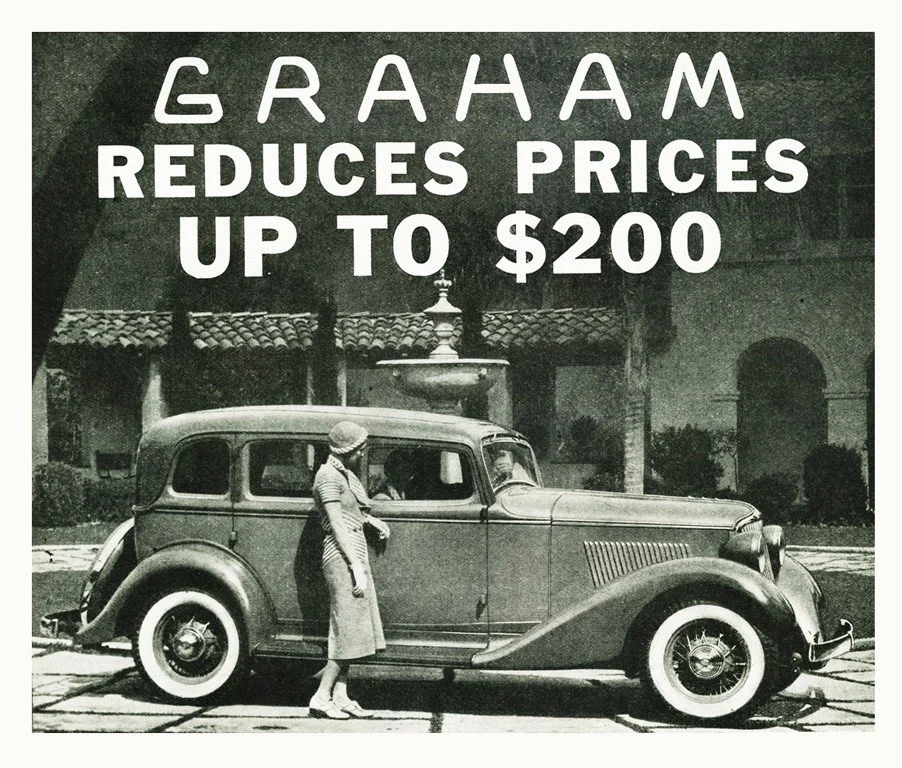-
This rare Blue Streak was found and purchased from its second owner in 2010. The car was a 26,000 mile survivor with a body in perfect condition but covered end-to-end in rust. The car received a full restoration, completed in October 2012, with typical NB Center careful attention to the details. Experimentation with different paint mixes and applications had to be done to duplicate the original pearlescent paint hue.
Because of the important position the Blue Streak holds as a milestone of design, in 2017 this Blue Streak was chosen for placement in the records of the Library of Congress as part of the National Historic Vehicle Register. The process for documentation for this honor is incredibly thorough including detailed photos, laser scanning of the entire car and detailed research records. This car was only the 19th to be placed in the register.
This car will stand as the ultimate example of the Blue Streak for generations to come.
-
Company
Graham-Paige Motors CorporationMake
GrahamModel
Standard Eight, Model 64, Blue StreakBody Style
Sedan, 4-door, 5-pass.Body Manufacture
Murray Body CompanyModel year
1933Wheelbase
119 inchesLength
N/AEngine
inline-8, 245.4 cidHorsepower
95 @ 3400 rpmTransmission
3-speed manual, Synchro-SilentOriginal Base Price
$825Brand Production
10,128This Car Production
N/A -
Ray Graham possessed a brilliant business mind but he was also deeply involved in the design of the cars Graham produced, always with an eye on the future. This kind of forward thinking led to Graham working with Amos Northrup of the Murray Company to design a new car that would debut in late 1931.
The Blue Streak was a true trend setter. It featured many styling cues that would become industry standard, such as, a grill and windshield laid back on an angle, the hood ornament was deemphasized and no longer the radiator cap, the radiator was now tucked under the long hood panels, the fenders wrapped over the top of the front tires reducing the gap down to the top of the bumper while at the same time having skirted sides that blocked the view of the frame and suspension. The headlights were bullet shaped and painted body color providing a streamlined look that didn’t draw your attention to the headlights. Speaking of body color, the Graham Blue Streak was the first production car to make wide use of pearlescent paints, accomplished at that time by adding crushed fish scales to the paint.
The chassis of this new car was “banjoed”, that is the frame rails were split horizontally at the rear with the rear axle passing through the gap created in the frame. While the front suspension was moved outward of the frame rails. This new chassis layout allowed the car to sit much lower, reducing the overall height and improving handling.
At a quick glance the car didn’t look radically different from the other cars on the road in late 1931, yet was stylistically way ahead of the competition. The entire automobile industry would eventually adopt most, if not all, of the features first seen on the Blue Streak.
Perhaps the most interesting historical point of the Blue Streak was its connection to multi-record breaking driver Erwin “Cannonball” Baker. Baker gained fame in the early part of the 20th century as a motorcycle racer. Afterward, he began to undertake point-to-point record attempts using both cars and motorcycles sponsored by the manufacturers. He ultimately made 143 record attempt runs totaling an estimated 5.5 million miles. The most famous of these was his New York City to Los Angeles dash in 1933 driving a Graham Standard 8 Blue Streak. He accomplished this solo drive across the country, at a time when there were no interstates let alone few paved roads, and he managed to get it done in little over 53 hours. This record stood until the 1970s when the underground trans-continental race, “The Cannonball Baker Sea-To-Shining Sea Memorial Trophy Dash”, aka, “The Cannonball Run”, was established by journalist Brock Yates.



